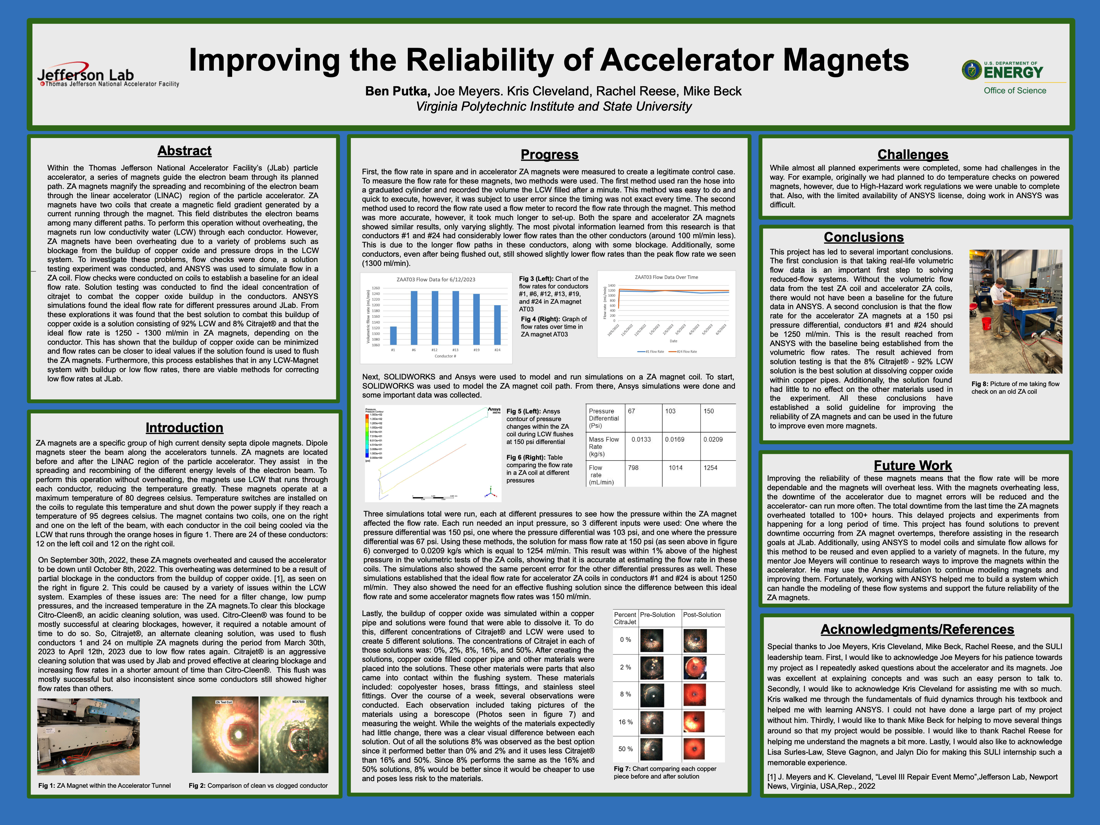Undergraduate Research at Jefferson Lab
Reliability of Accelerator Magnets
Student: Ben Putka
School: Virginia Polytechnic Institute and State University
Mentored By: Joe Meyers and Kris Cleveland
Within the Thomas Jefferson National Accelerator Facility's (JLab) particle accelerator, a series of magnets guide the electron beam through its planned path. ZA magnets magnify the spreading and recombining of the electron beam through the linear accelerator (LINAC) region of the particle accelerator. To prevent overheating, the magnets run low conductivity water (LCW) through each conductor. However, the ZA magnets have been overheating due to blockage from the buildup of copper oxide and pressure drops in the LCW system. To investigate these problems, flow checks were done, a solution testing experiment was conducted, and ANSYS was used to simulate flow in a ZA coil. From these investigations, it was found that the best solution to combat this buildup of copper oxide is a solution consisting of 92% LCW and 8% Citrajet® and that the ideal flow rate is 1250 - 1300 ml/min in ZA magnets, depending on the conductor. This has shown that the buildup of copper oxide can be minimized and flow rates can be closer to ideal values if the solution found is added to the ZA Magnets's LCW system. This process establishes that in any LCW-Magnet system with issues, there are viable methods for correcting these issues at JLab.

Citation and linking information
For questions about this page, please contact Education Web Administrator.
